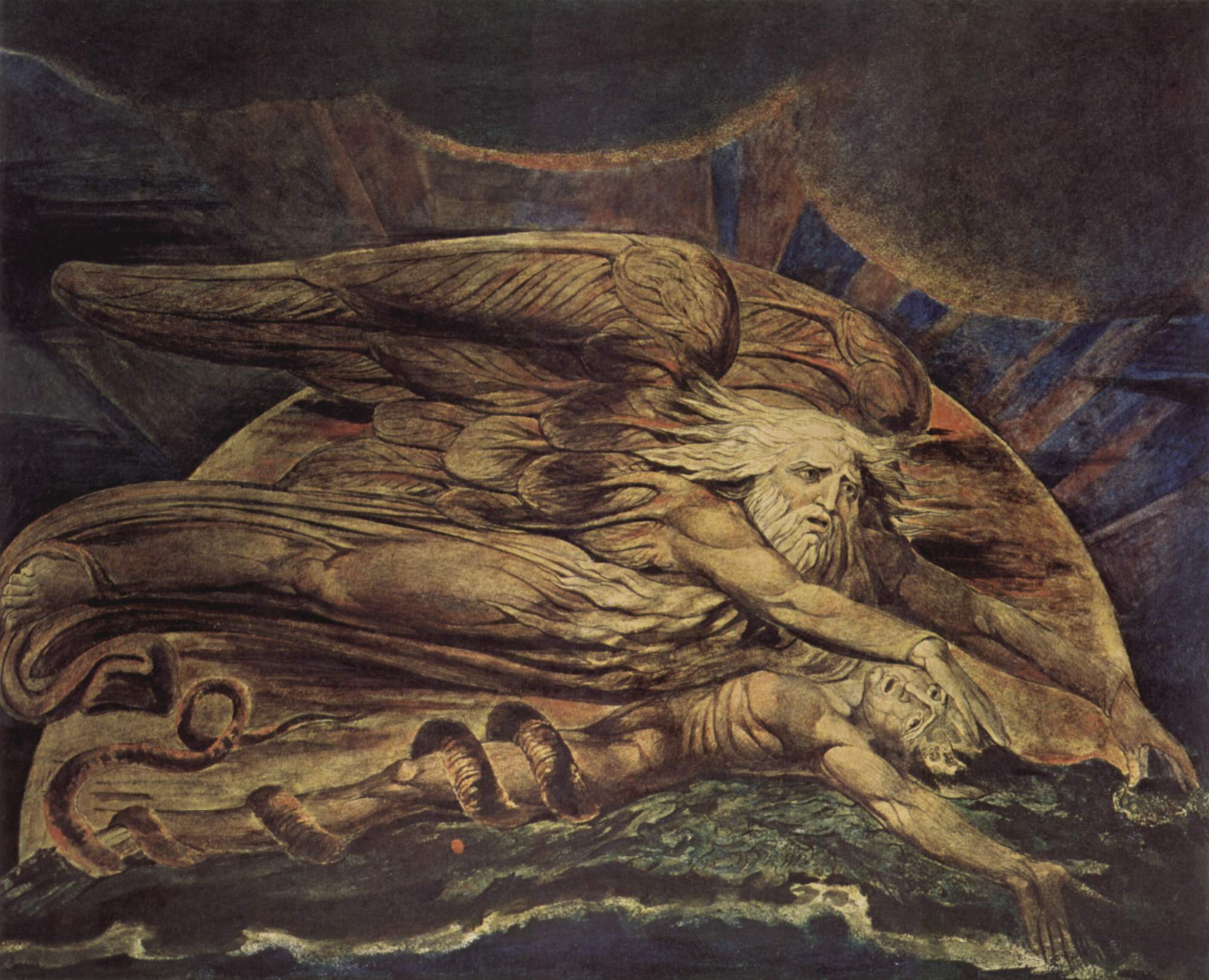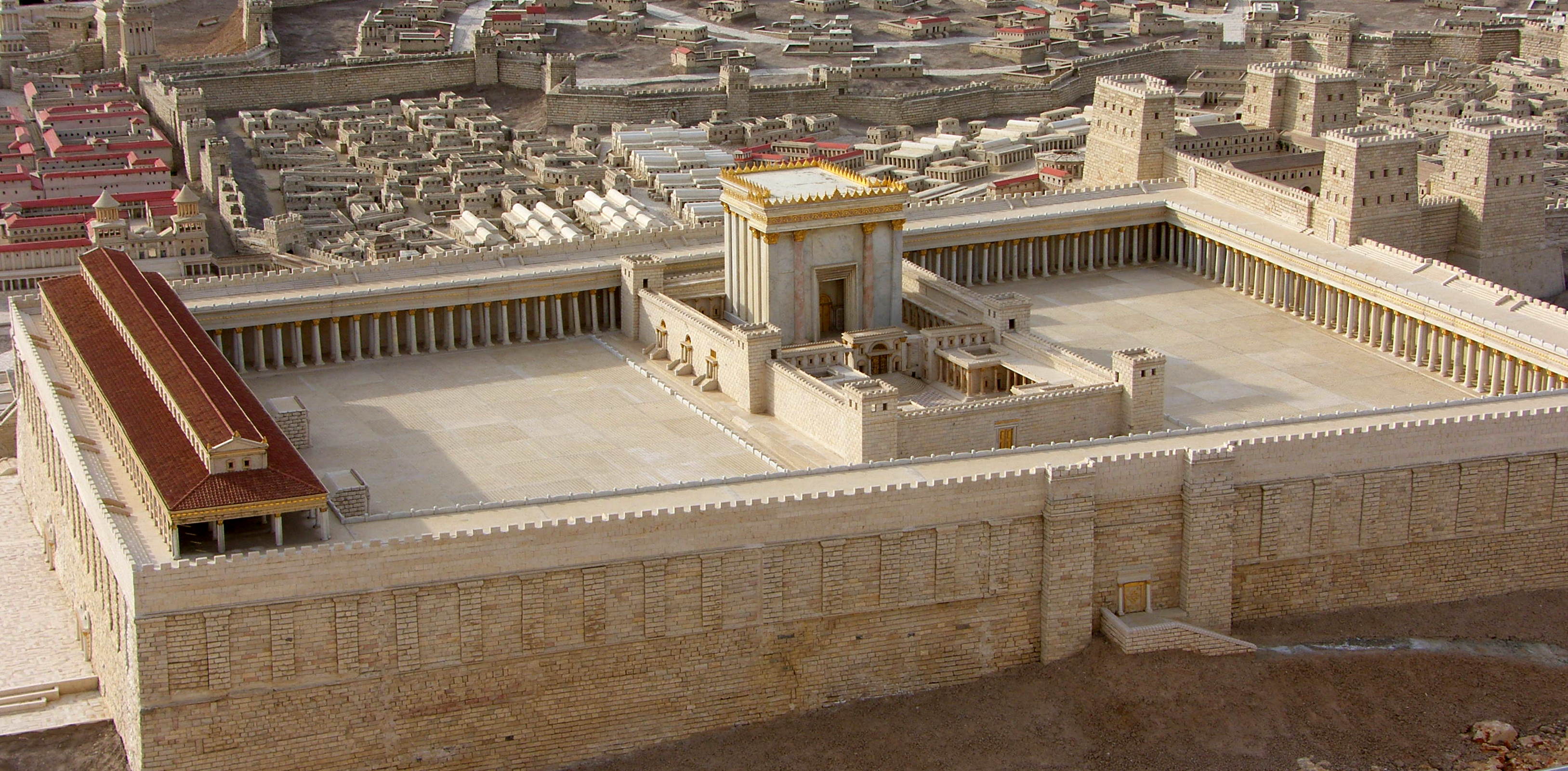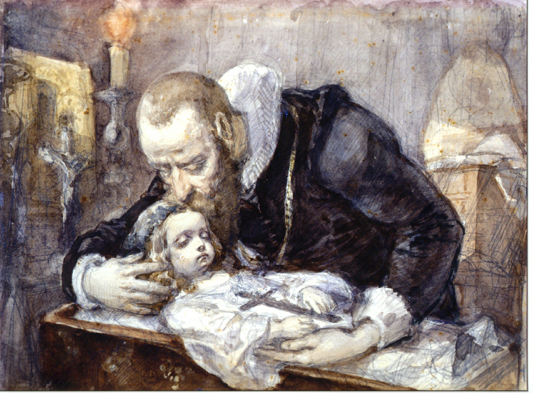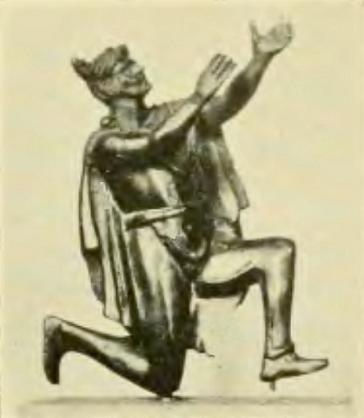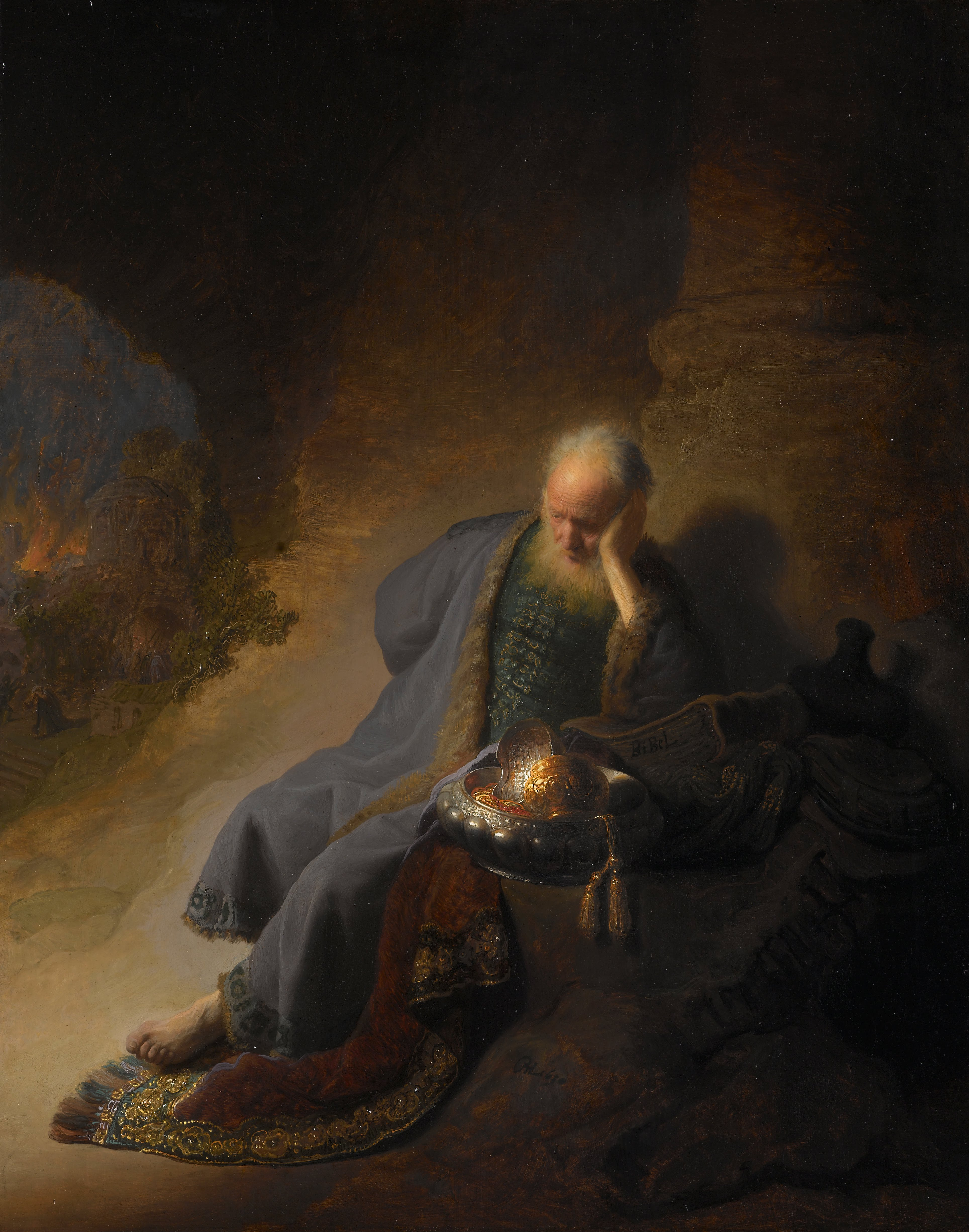|
Syriac Apocalypse Of Baruch
2 Baruch is a Jewish apocryphal text thought to have been written in the late 1st century CE or early 2nd century CE, after the destruction of the Temple in 70 CE. It is attributed to the biblical figure Baruch ben Neriah (c. 6th century BC) and so is associated with the Old Testament, but not regarded as scripture by Jews or by most Christian groups. It is included in some editions of the Peshitta, and is part of the Bible in the Syriac Orthodox tradition. It has 87 sections (chapters). ''2 Baruch'' is also known as the Apocalypse of Baruch or the Syriac Apocalypse of Baruch (used to distinguish it from the Greek Apocalypse of Baruch). The Apocalypse proper occupies the first 77 chapters of the book. Chapters 78–87 are usually referred to as the Letter of Baruch to the Nine and a Half Tribes. Manuscript tradition The Letter of Baruch had a separate and wider circulation than the rest of the book, and is attested in thirty-six Syriac manuscripts. The Apocalypse proper h ... [...More Info...] [...Related Items...] OR: [Wikipedia] [Google] [Baidu] |
Jewish Apocrypha
The Jewish apocrypha () are religious texts written in large part by Jews, especially during the Second Temple period, not accepted as sacred manuscripts when the Hebrew Bible was Development of the Hebrew Bible canon, canonized. Some of these books are considered sacred in certain Christian denominations and are included in their versions of the Old Testament. The Jewish apocrypha is distinctive from the New Testament apocrypha and Christian biblical apocrypha as it is the only one of these collections which works within a Jewish theological framework. Apocrypha in Judaism Certain sects of Second Temple Judaism, such as the Essenes in Judaea (Roman province), Judaea and the Therapeutae in Alexandria, were said to have a "secret or hidden" literature. The Pharisees were familiar with these texts. The Apocalyptic literature is an example of this secret literature. Based on unfulfilled prophecies, these books were not considered scripture, but rather part of a literary form that flou ... [...More Info...] [...Related Items...] OR: [Wikipedia] [Google] [Baidu] |
Antonio Ceriani
Antonio Maria Ceriani (May 2, 1828 – March 2, 1907) was an Italian prelate, Syriacist, and scholar. Ceriani was born at Uboldo, in Lombardy. He was ordained a priest for his home diocese of Milan in 1852 and the same year was appointed keeper of the catalogue of the Biblioteca Ambrosiana (Ambrosian Library) at Milan. From 1857 he was one of the Doctors of the ''Ambrosiana'' of which in January 1870 he became Prefect, a post he kept until his death. Among his additional charges, from 1855 he was professor of oriental languages in the diocesan Major Seminary and from 1872 professor of paleography. From the 1880s he was in scholarly contact with the English medical doctor turned liturgical scholar, John Wickham Legg. Ceriani discovered the pseudepigraphal apocrypha entitled the '' Assumption of Moses'' (or the ''Testament of Moses'' in modern editions)—a Jewish work that survived in one poorly preserved sixth-century Latin palimpsest in the Ambrosian Library. He published ... [...More Info...] [...Related Items...] OR: [Wikipedia] [Google] [Baidu] |
Adam
Adam is the name given in Genesis 1–5 to the first human. Adam is the first human-being aware of God, and features as such in various belief systems (including Judaism, Christianity, Gnosticism and Islam). According to Christianity, Adam sinned in the Garden of Eden by eating from the tree of the knowledge of good and evil. This action introduced death and sin into the world. This sinful nature infected all his descendants, and led humanity to be expelled from the Garden. Only through the crucifixion of Jesus, humanity can be redeemed. In Islam, Adam is considered '' Khalifa'' (خليفة) (successor) on earth. This is understood to mean either that he is God's deputy, the initiation of a new cycle of sentient life on earth, or both. Similar to the Biblical account, the Quran has Adam placed in a garden where he sins by taking from the Tree of Immortality, so loses his abode in the garden. When Adam repents from his sin, he is forgiven by God. This is seen as a guidan ... [...More Info...] [...Related Items...] OR: [Wikipedia] [Google] [Baidu] |
Messiah
In Abrahamic religions, a messiah or messias (; , ; , ; ) is a saviour or liberator of a group of people. The concepts of '' mashiach'', messianism, and of a Messianic Age originated in Judaism, and in the Hebrew Bible, in which a ''mashiach'' is a king or High Priest traditionally anointed with holy anointing oil. In Judaism, ''Ha-mashiach'' (), often referred to as ' (), is a fully human non-deity Jewish leader, physically descended via a human genetic father of an unbroken paternal Davidic line through King David and King Solomon. He will accomplish predetermined things in a future arrival, including the unification of the tribes of Israel, the gathering of all Jews to '' Eretz Israel'', the rebuilding of the Temple in Jerusalem, the ushering in of a Messianic Age of global universal peace, and the annunciation of the world to come. The Greek translation of Messiah is ''Khristós'' (), anglicized as ''Christ''. It occurs 41 times in the Septuagint and 529 times in ... [...More Info...] [...Related Items...] OR: [Wikipedia] [Google] [Baidu] |
2 Esdras
2 Esdras, also called 4 Esdras, Latin Esdras, or Latin Ezra, is an apocalyptic book in some English versions of the Bible. Tradition ascribes it to Ezra, a scribe and priest of the fifth century BC, whom the book identifies with the sixth-century figure Shealtiel. 2 Esdras forms a part of the canon of Scripture in the Ethiopian Orthodox Church (an Oriental Orthodoxy body), though it is reckoned among the apocrypha by Roman Catholics and Protestants. Within Eastern Orthodoxy it forms a part of the canon although its usage varies by different traditions. 2 Esdras was translated by Jerome as part of the Vulgate, though he placed it in an appendix. Naming conventions As with 1 Esdras, some confusion exists about the numbering of this book. The Vulgate of Jerome includes only a single book of Ezra, but in the Clementine Vulgate, 1, 2, 3 and 4 Esdras are separate books. Protestant writers, after the Geneva Bible, called 1 and 2 Esdras of the Vulgate Ezra and Nehemiah, res ... [...More Info...] [...Related Items...] OR: [Wikipedia] [Google] [Baidu] |
Hebrew Language
Hebrew (; ''ʿÎbrit'') is a Northwest Semitic language within the Afroasiatic language family. A regional dialect of the Canaanite languages, it was natively spoken by the Israelites and remained in regular use as a first language until after 200 CE and as the liturgical language of Judaism (since the Second Temple period) and Samaritanism. The language was revived as a spoken language in the 19th century, and is the only successful large-scale example of linguistic revival. It is the only Canaanite language, as well as one of only two Northwest Semitic languages, with the other being Aramaic, still spoken today. The earliest examples of written Paleo-Hebrew date back to the 10th century BCE. Nearly all of the Hebrew Bible is written in Biblical Hebrew, with much of its present form in the dialect that scholars believe flourished around the 6th century BCE, during the time of the Babylonian captivity. For this reason, Hebrew has been referred to by Jews as '' ... [...More Info...] [...Related Items...] OR: [Wikipedia] [Google] [Baidu] |
Siege Of Jerusalem (70)
The siege of Jerusalem in 70 CE was the decisive event of the First Jewish–Roman War (66–73 CE), a major rebellion against Roman rule in the province of Judaea. Led by Titus, Roman forces besieged the Jewish capital, which had become the main stronghold of the revolt. After months of fighting, they breached its defenses, destroyed the Second Temple, razed most of the city, and killed, enslaved, or displaced a large portion of its population. The fall of Jerusalem marked the effective end of the Jewish revolt and had far-reaching political, religious, and cultural consequences. In the winter of 69/70 CE, following a pause caused by the Roman succession war, the campaign in Judaea resumed as Titus led at least 48,000 troops—including four legions and auxiliary forces—back into the province. By spring, this army had encircled Jerusalem, whose population had surged with refugees and Passover pilgrims. Inside the city, rival factions led by John of Gischala, Simo ... [...More Info...] [...Related Items...] OR: [Wikipedia] [Google] [Baidu] |
Nebuchadnezzar II
Nebuchadnezzar II, also Nebuchadrezzar II, meaning "Nabu, watch over my heir", was the second king of the Neo-Babylonian Empire, ruling from the death of his father Nabopolassar in 605 BC to his own death in 562 BC. Often titled Nebuchadnezzar the Great, he is regarded as the empire's greatest king, famous for his military campaigns in the Levant and their role in Jewish history, and for his construction projects in his capital of Babylon, including the Hanging Gardens of Babylon. Ruling for 43 years, Nebuchadnezzar was the longest-reigning king of the Babylonian dynasty. By the time of his death, he was among the most powerful rulers in the world. Possibly named after Nebuchadnezzar (governor of Uruk), his grandfather of the same name, or after Nebuchadnezzar I ( 1125–1104 BC), one of Babylon's greatest ancient warrior-kings, Nebuchadnezzar II had already secured renown for himself during his father's reign, leading armies in the Medo-Babylonian conquest of the Assyrian Empir ... [...More Info...] [...Related Items...] OR: [Wikipedia] [Google] [Baidu] |
Precognition
Precognition (from the Latin 'before', and 'acquiring knowledge') is the purported psychic phenomenon of seeing, or otherwise becoming directly aware of, events in the future. There is no accepted scientific evidence that precognition is a real effect, and it is widely considered to be pseudoscience. Precognition violates the principle of causality, that an effect cannot occur before its cause. Precognition has been widely believed in throughout history. Despite the lack of scientific evidence, many people believe it to be real; it is still widely reported and remains a topic of research and discussion within the parapsychology community. Precognitive phenomena Precognition is sometimes treated as an example of the wider phenomenon of prescience or foreknowledge, to understand by any means what is likely to happen in the future. It is distinct from premonition, which is a vaguer feeling of some impending disaster. Related activities such as predictive prophecy and fort ... [...More Info...] [...Related Items...] OR: [Wikipedia] [Google] [Baidu] |
Lamentation
A lament or lamentation is a passionate expression of grief, often in music, poetry, or song form. The grief is most often born of regret, or mourning. Laments can also be expressed in a verbal manner in which participants lament about something that they regret or someone that they have lost, and they are usually accompanied by wailing, moaning and/or crying. Laments constitute some of the oldest forms of writing, and examples exist across human cultures. History Many of the oldest and most lasting poems in human history have been laments. The Lament for Sumer and Ur dates back at least 4000 years to ancient Sumer, the world's first urban civilization. Laments are present in both the ''Iliad'' and the ''Odyssey'', and laments continued to be sung in elegiacs accompanied by the aulos in classical and Hellenistic Greece. Elements of laments appear in ''Beowulf'', in the Hindu Vedas, and in ancient Near Eastern religious texts. They are included in the Mesopotamian City Lament ... [...More Info...] [...Related Items...] OR: [Wikipedia] [Google] [Baidu] |
Prayer
File:Prayers-collage.png, 300px, alt=Collage of various religionists praying – Clickable Image, Collage of various religionists praying ''(Clickable image – use cursor to identify.)'' rect 0 0 1000 1000 Shinto festivalgoer praying in front of the Tagata fertility shrine rect 1000 0 2000 1000 Balinese Hindu bride praying during a traditional wedding ceremony rect 2000 0 3000 1000 Muslim pilgrim praying at the Masjid al-Haram rect 0 1000 1000 2000 Catholic Trappist monk praying before a crucifix rect 1000 1000 2000 2000 Ethiopian priest praying in Lalibela rect 2000 1000 3000 2000 Buddhists praying in Leh rect 0 2000 1000 3000 Sikh praying in Front of the Golden Temple in Amritsar rect 1000 2000 2000 3000 Members of the Mengjia Longshan Temple Association gather for a traditional Chinese prayer service rect 2000 2000 3000 3000 Jewish people praying at the Western Wall Prayer is an invocation or act that seeks to activate a rapport with an object of worship through d ... [...More Info...] [...Related Items...] OR: [Wikipedia] [Google] [Baidu] |
Book Of Jeremiah
The Book of Jeremiah () is the second of the Latter Prophets in the Hebrew Bible, and the second of the Prophets in the Christian Old Testament. The superscription at chapter Jeremiah 1#Superscription, Jeremiah 1:1–3 identifies the book as "the words of Jeremiah son of Hilkiah". Of all the prophets, Jeremiah comes through most clearly as a person, ruminating to his scribe Baruch ben Neriah, Baruch about his role as a servant of God with little good news for his audience. His book is intended as a message to the Jews in exile in Babylon, explaining the disaster of exile as God's response to Israel's pagan worship: the people, says Jeremiah, are like an unfaithful wife and rebellious children, their infidelity and rebelliousness made judgment inevitable, although restoration and a new covenant are foreshadowed. Authentic oracles of Jeremiah are probably to be found in the poetic sections of Jeremiah 1, chapters 1 through Jeremiah 25, 25, but the book as a whole has been heavily ... [...More Info...] [...Related Items...] OR: [Wikipedia] [Google] [Baidu] |
